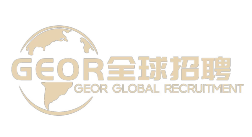New Opportunities in Cross-cultural Workplace: How to Achieve Two-way Matching between Foreigners and Enterprises Efficiently
New opportunities in the cross-cultural workplace: How to efficiently achieve two-way matching between foreigners and enterprises
Today, with the deep integration of globalization, workplace ecology is undergoing profound changes. More and more companies are eager to promote innovation by introducing international talents, and foreigners with professional skills and cross-cultural backgrounds are also actively seeking development opportunities in China. How to break the information barrier and realize the efficient docking of talents and posts has become a common concern of both sides.
1. the needs of enterprises: from "casting a wide net" to "precise positioning"
When many enterprises recruit foreigners, often fall into the "heavy language light skills" or "heavy experience light culture" misunderstanding. In fact, a successful multinational talent match requires a balance between professional competence and team fit. For example, in order to explore the Southeast Asian market, a technology company preferred Indonesian engineers who knew both programming and local culture, rather than relying solely on candidates who were fluent in English, shortening the localization cycle of the final product by 40%.
Enterprises need to clarify the core values of posts: technical posts should focus on hard skills and project experience, management posts should evaluate cross-cultural leadership, and marketing posts should examine cultural sensitivity and resource integration ability. By refining the list of requirements, companies can more efficiently screen out talents that truly meet their strategic goals.
2. the perspective of job seekers: the critical path to break through the information gap
For foreign job seekers, language barriers, cultural differences and lack of industry awareness are the three major challenges. An industrial designer from France once shared that he got to know Chinese business representatives by participating in industry summits and finally got job opportunities instead of relying on traditional recruitment platforms. This reveals a trend: actively building industry contacts is more effective than passively delivering resumes .
In addition, it is important to understand Chinese workplace culture. For example, a German company in China found that foreign candidates with the dual characteristics of "result orientation + teamwork" are often more likely to integrate into the team than those who simply emphasize personal achievement. Job seekers can improve their competitiveness by studying corporate values in advance and participating in cross-cultural training.
3. innovation matching mode: technology empowerment and ecological co-construction
Traditional recruitment platforms are upgrading technology to optimize the efficiency of cross-border matching. For example, a platform uses AI algorithms to analyze candidate skills, cultural preferences and business needs to achieve a "thousand people, thousands of faces" recommend system. The data shows that the average recruitment cycle of enterprises using this function has been shortened by 25%, and the candidate retention rate has increased by 18%.
The improvement of industry ecology is also promoting the improvement of matching quality. Some cities have set up "international talent ports" to integrate one-stop services such as visa processing, housing leasing, and language training to reduce the cost of integration for foreigners. Enterprises can actively participate in such ecological construction and expand the talent pool through government cooperation and industry association linkage.
4. cultural integration: from "employment relationship" to "value co-creation"
The success of multinational teams ultimately depends on the degree of cultural integration. An Internet company implements the "cultural tutorial system", equips each foreign employee with Chinese colleagues as mentors, and organizes cultural exchange activities on a regular basis. This model not only helps foreigners quickly adapt to the workplace environment, but also inspires the team to innovate-for example, the product launched by Chinese and French designers, which combines oriental aesthetics and minimalism, has become a hit.
Enterprises need to establish inclusive management systems, such as flexibly adjusting assessment standards to suit different cultural backgrounds, or setting up cross-cultural project teams to encourage thinking collisions. When foreigners feel respected and recognized, their sense of belonging and creativity will be significantly improved.
5. a long-term perspective: building a sustainable multinational talent ecosystem
Cross-border recruitment should not be a short-term activity, but should be integrated into the corporate globalization strategy. A manufacturing giant set up a joint laboratory in cooperation with overseas universities to lock in high-quality fresh graduate resources in advance. At the same time, an internal promotion channel will be established to allow foreign employees to see a clear career development path. This "training + retention" model has stabilized the proportion of foreign members in its core team at more than 30%.
It is equally important for job seekers to choose companies with international genes. Paying attention to whether an enterprise provides cross-cultural training, whether it has a diversified management team, whether it participates in the formulation of international standards and other indicators can help judge its long-term development potential.
Transnational talent mobility is reshaping the competitive landscape of the workplace. Enterprises need to embrace globalization with a more open attitude, and transform foreigners' professional capabilities into innovative momentum by accurately positioning needs, optimizing matching models, and promoting cultural integration; job seekers need to actively break through information barriers and enhance cross-cultural adaptability. Looking for new career opportunities in the Chinese market. When both sides achieve each other with an equal and inclusive attitude, the cross-cultural workplace will burst out with infinite possibilities.
